What exactly is important for your brand positioning? It is characterized by many facets, which together paint a concrete picture of your brand. In part 3 of our blog series on brand positioning, we will show you which points you should pay attention to.
The positioning of a company is reflected in the meaningful values and visual identity of the company, in the internal interaction between employees and in external communication with partners and customers. It becomes clear in the fundamental pricing policy and the quality standards of the company's own products and services for customers. Positioning is omnipresent.
At the beginning, you are faced with many questions: What values do you want to represent? How do you want to communicate? What do the design and language of your appearance reveal? And how do you actually want to sell? Quality or regionality, price or a special benefit? All this and more determines the positioning of your brand. Its character determines whether you can retain customers. And win new ones. To achieve this, your brand must arouse enthusiasm and satisfy needs wherever it meets your target group.
It is more expensive and more difficult to acquire a new customer than to retain an existing one. Attraction and loyalty should therefore also be promoted with every customer contact. This means: absolute customer orientation in the company's processes and structures so that customer expectations are (over)fulfilled. And, of course, good service! Service only begins when something good is done for the customer over and above the expected service.
The following 19 points can contribute positively (or negatively) to your positioning and branding, which are only outlined here:
1 | Target group clarity for identification
For target customers (and also potential employees), it must be clear at the first point of contact who the company's actual target group is and what it offers them. Should the viewer feel addressed because they can be assigned to this company's target group or not? This can be achieved very well through the visual language, the choice of colors and the tonality and expressiveness of your texts.
An example to help you understand: The website of this plastics technology company before the relaunch in 2017. At first glance, it is not clear what the company does for a living.
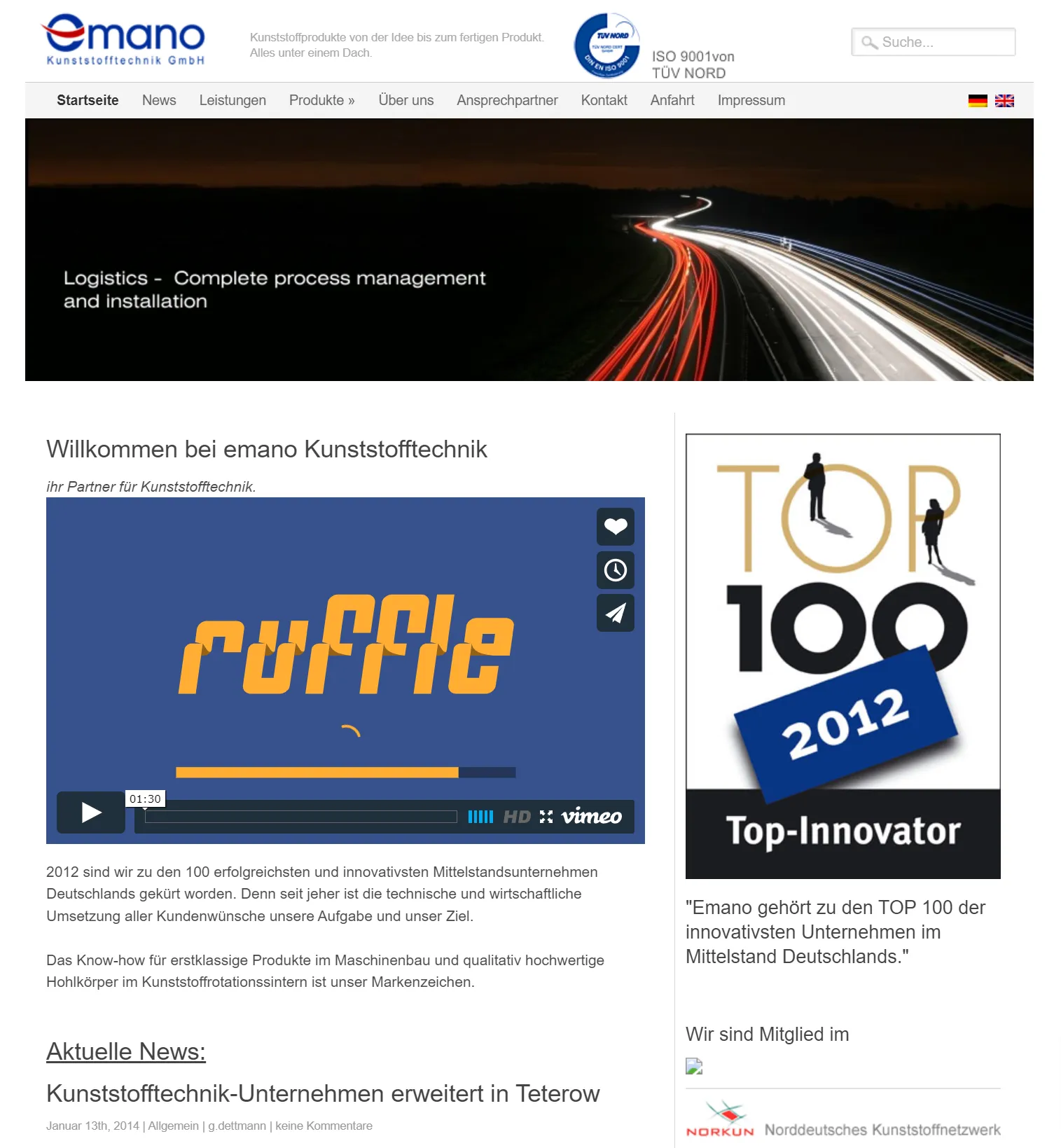
What does this company do, what products does it manufacture? Difficult to answer with the older website. After the relaunch, it became clear to both target customers and potential applicants what emano is about and who it is aimed at:
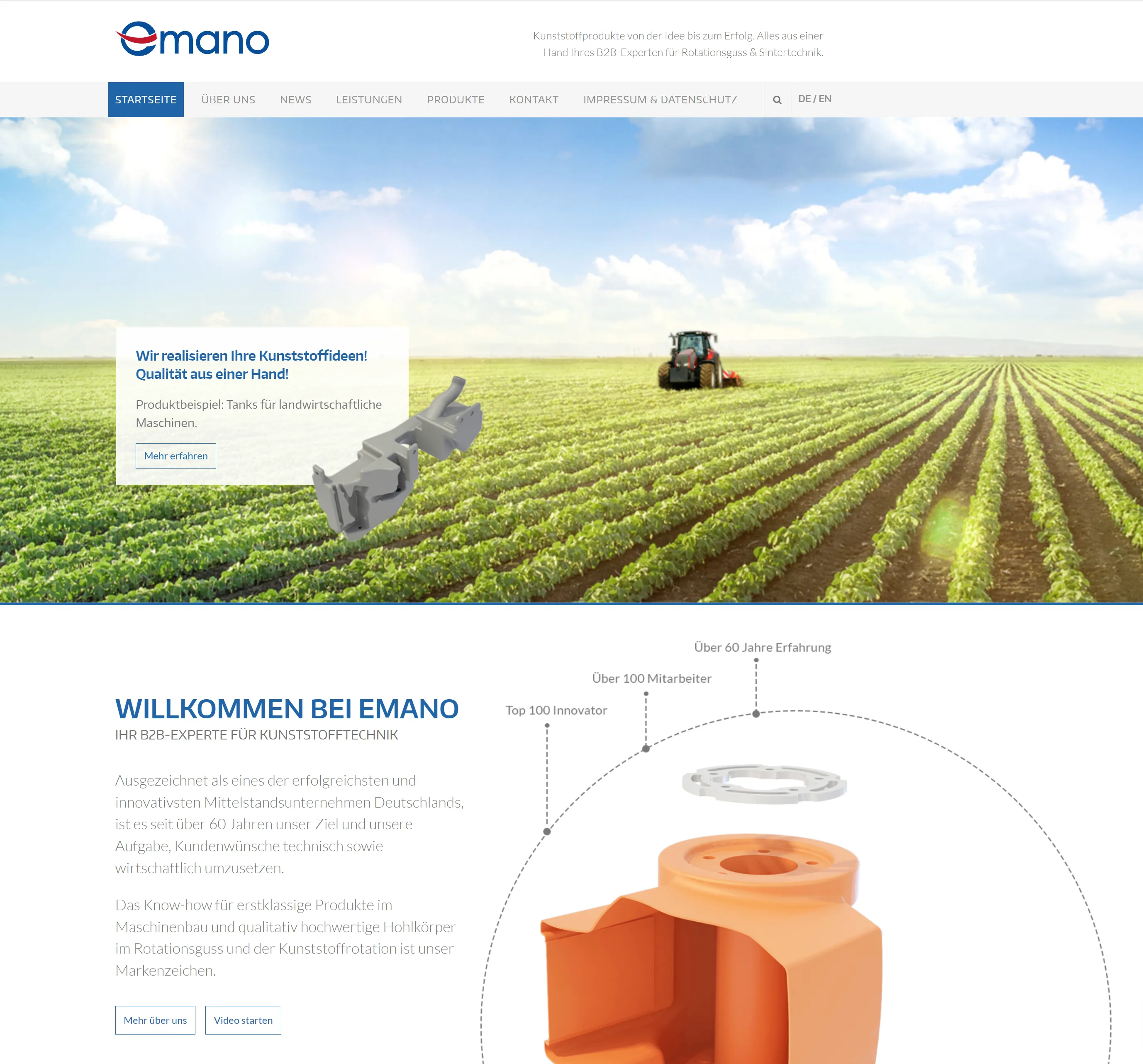
It is also possible to address the desired customers directly in a target group section, as Square-Immo.de does:

On TutKit.com we have target group-specific landing pages, but also an industry section directly on the start page so that the target group can quickly find what they are looking for.
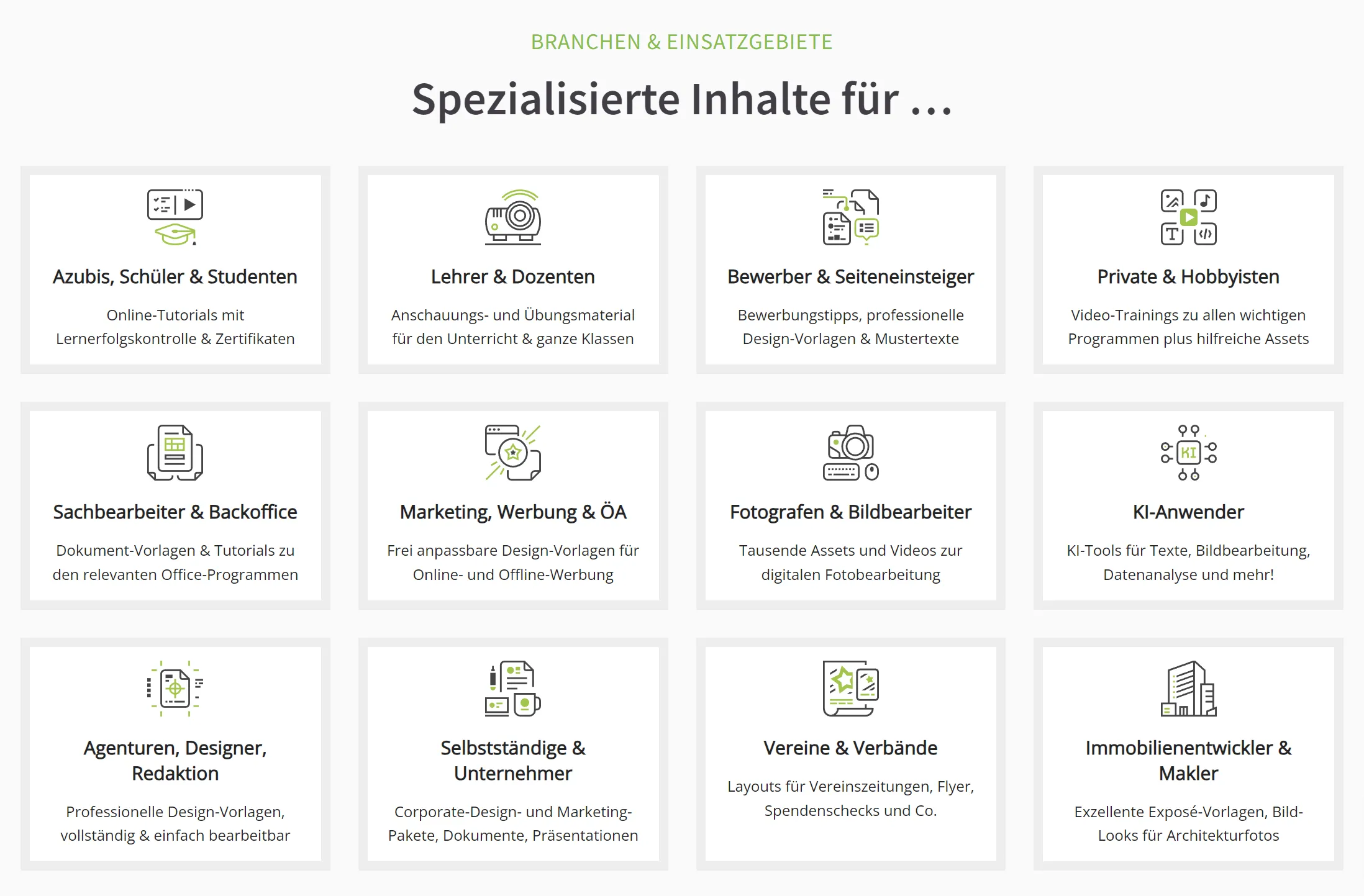
2 | The design as a positioning factor
Have you already asked yourself how your brand should come across visually? Classy or plain and simple? Valuable or witty? Comfortably warm or casually cool? Your customers must be able to immediately grasp the character of your brand through the design. It must show at a glance who your target group is and how you communicate with them.
As part of an agency assignment for a client who sells properties in a beautiful location in Waren (Müritz), we created a design with a sophisticated look and color effect. However, the client rejected an alternative design that was intended to appear more family-friendly. Its positioning should aim to be classy and exclusive.
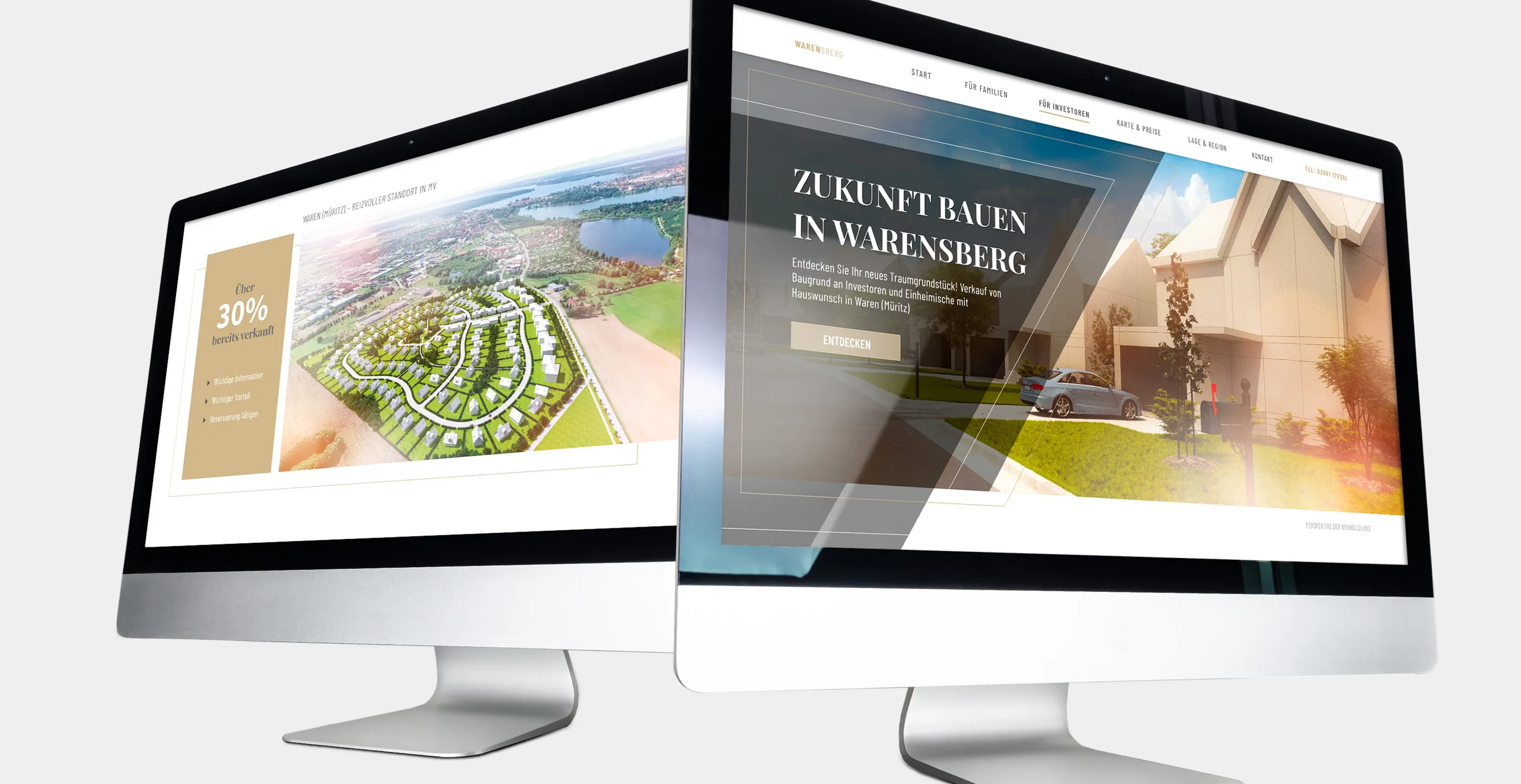
Amazon is certainly not the most beautiful online store on earth. The effect should be trimmed to be cost-effective and this is underlined by the layout, the color scheme, the small distances between the content elements, etc.
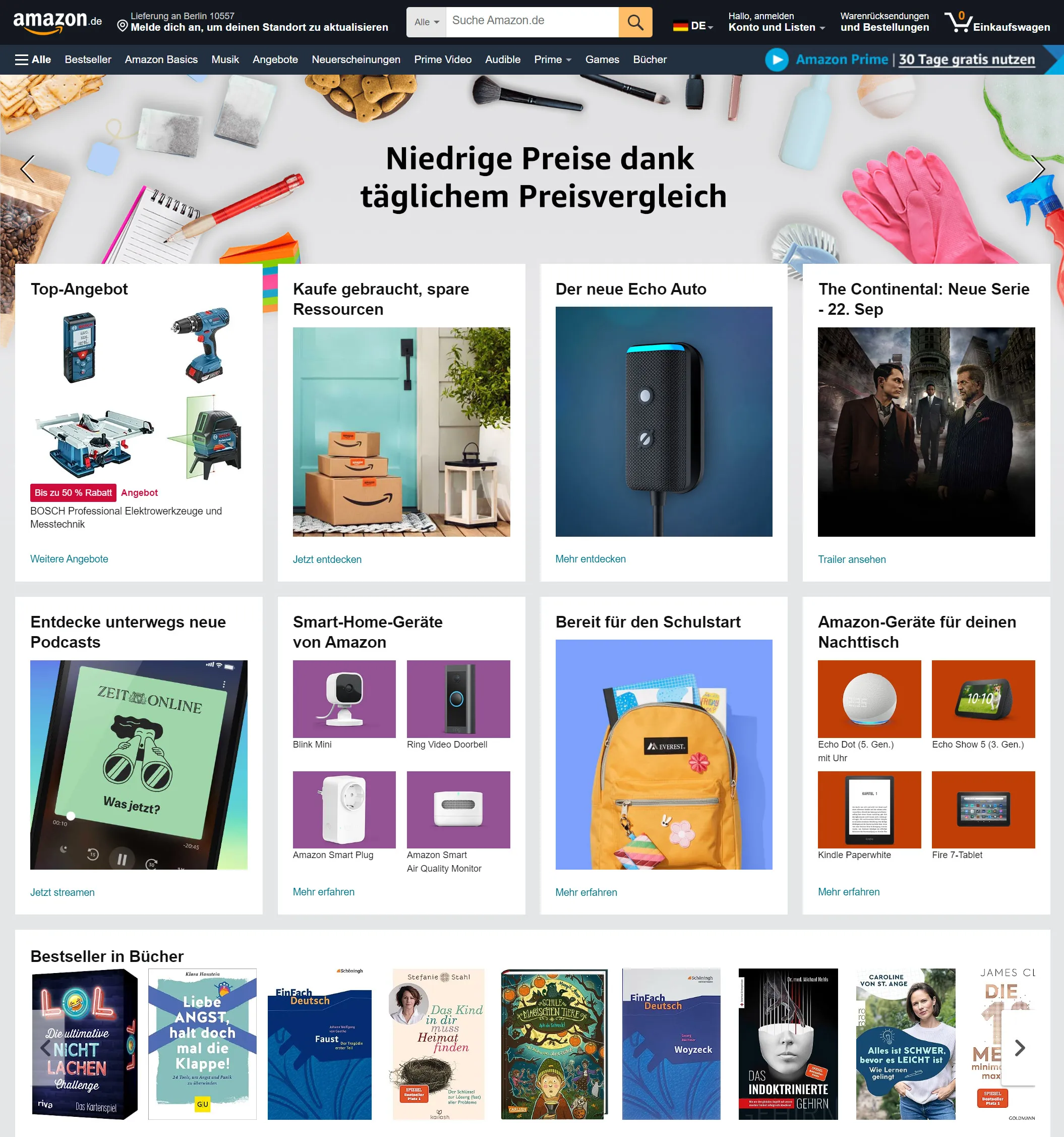
Be careful with changes
You already have a brand that you have positioned and are planning a relaunch? Proceed sensitively. A relaunch can backfire without a feel for the purchasing needs of the customer group.
When Babywalz was relaunched, a relatively colorful concept from 2010 turned into a coordinated blue color scheme in 2011 ... the effect of the online store changed from inexpensive to expensive. Orders dropped, sales fell. On the left you can see the old version and on the right the one after the relaunch:
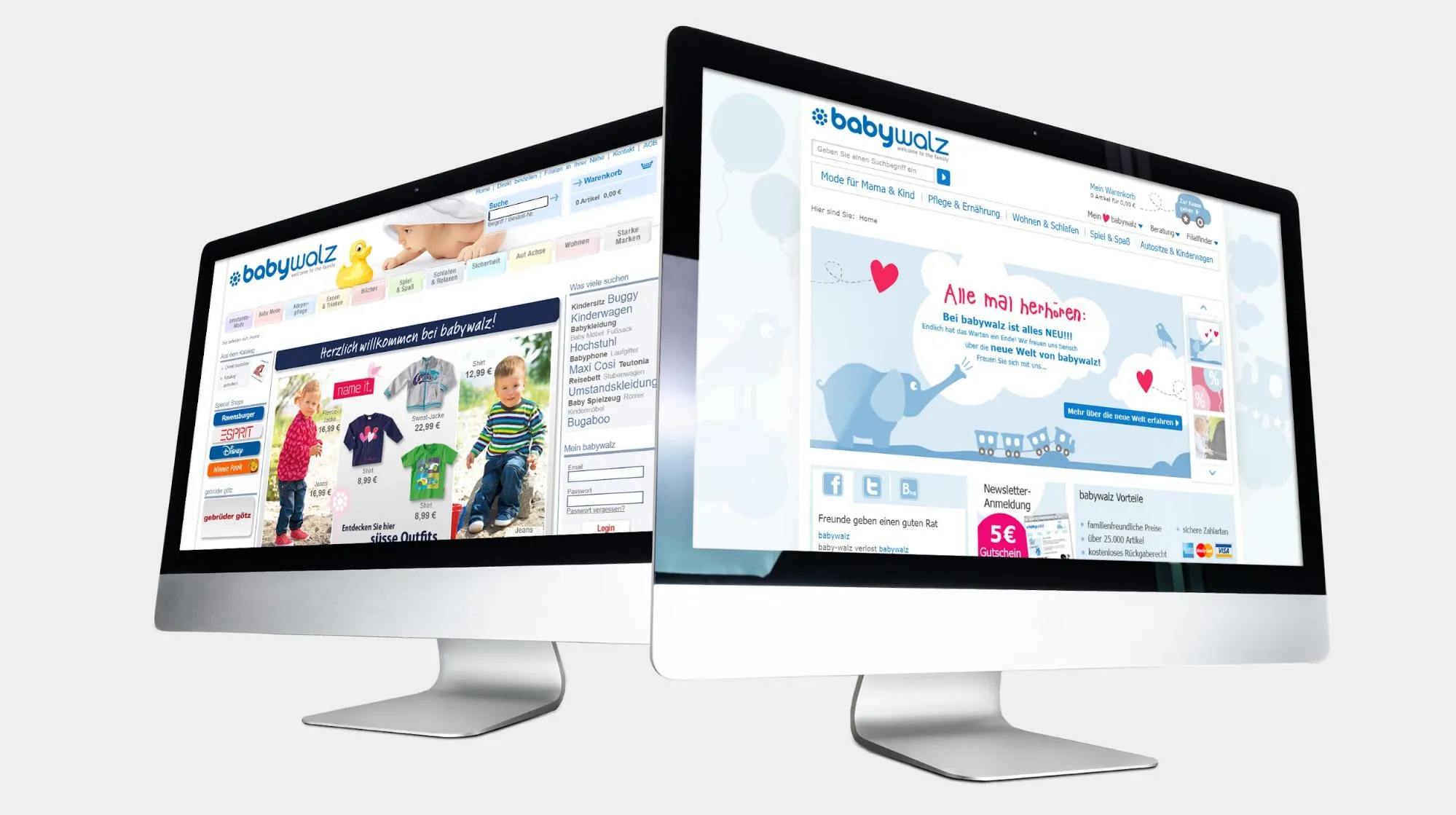
Shortly after the relaunch, the online store became more colorful and less color-coordinated so that the target group would not get a high-priced impression of the online store. Here is the online store for 2013. Credit:
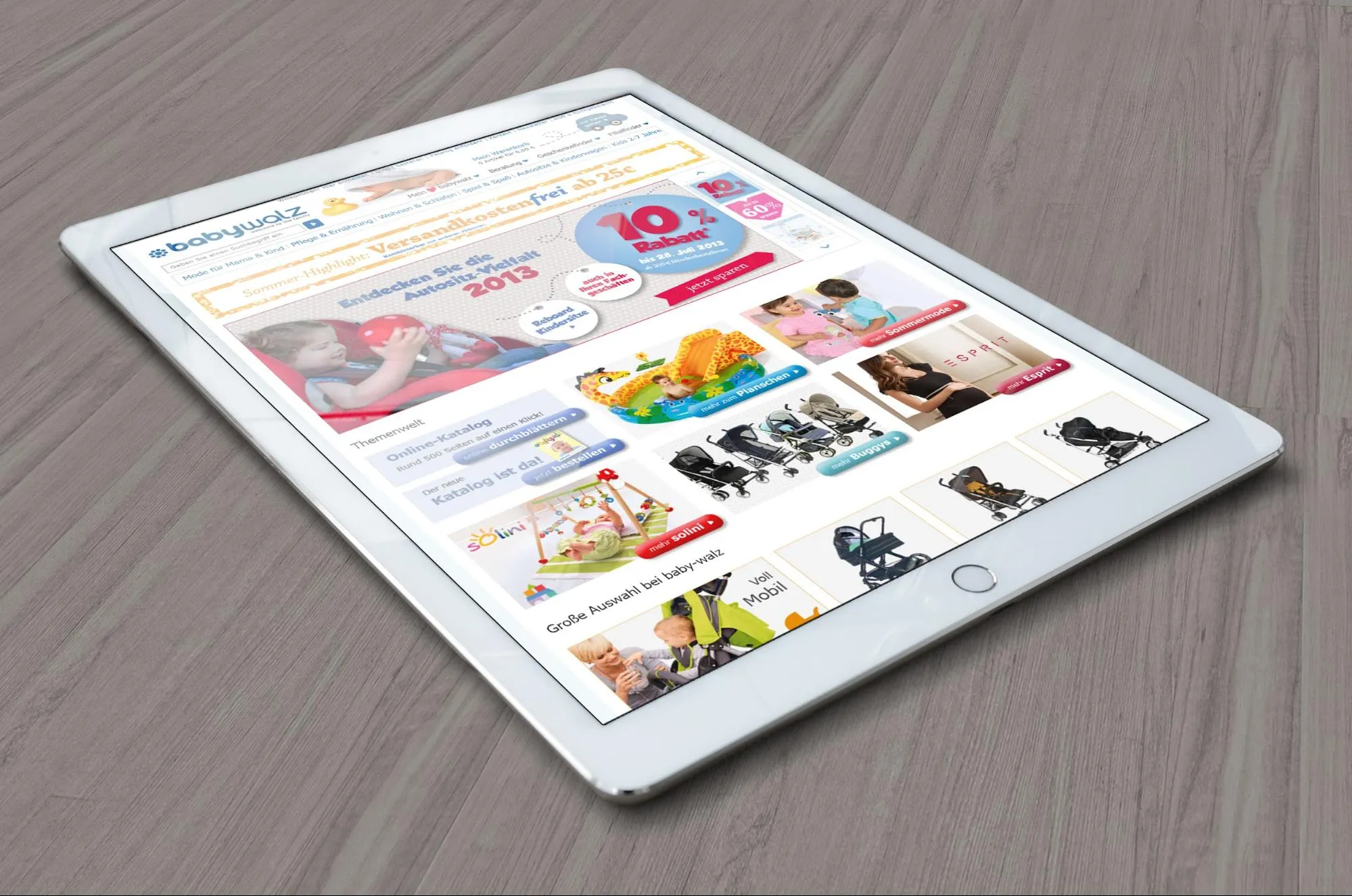
Today, www.baby-walz.de is once again more coordinated in its layout and choice of colors. Consumer attitudes have changed, also thanks to standardized store user interfaces such as Zalando, AboutYou and Co.
3 | Creating loyalty through exclusivity, status and values
A well-positioned company sells more than just products or services. It offers a mission that appeals to the lifestyle, emotions and values of the target group. What the product can do is not so important. Having it is a statement - just like Apple or BMW.
The e-car giant Tesla is firmly convinced that it is not just building vehicles, but also saving the planet from climate collapse. Its mission: "Accelerating the world's transition to sustainable energy" is clearly legible on the wall of its main plant in the USA. This statement also sticks with customers, who love to buy the mission and status as well as the car.
But such customer loyalty can also be lost, as the following example shows: years ago, it was the lifestyle drink of the ecologically oriented world of indulgence. Then Radeberger bought the brand and went mainstream. A bad idea. The clear value proposition was watered down and the once so enthusiastic target group left Bionade on the shelves.
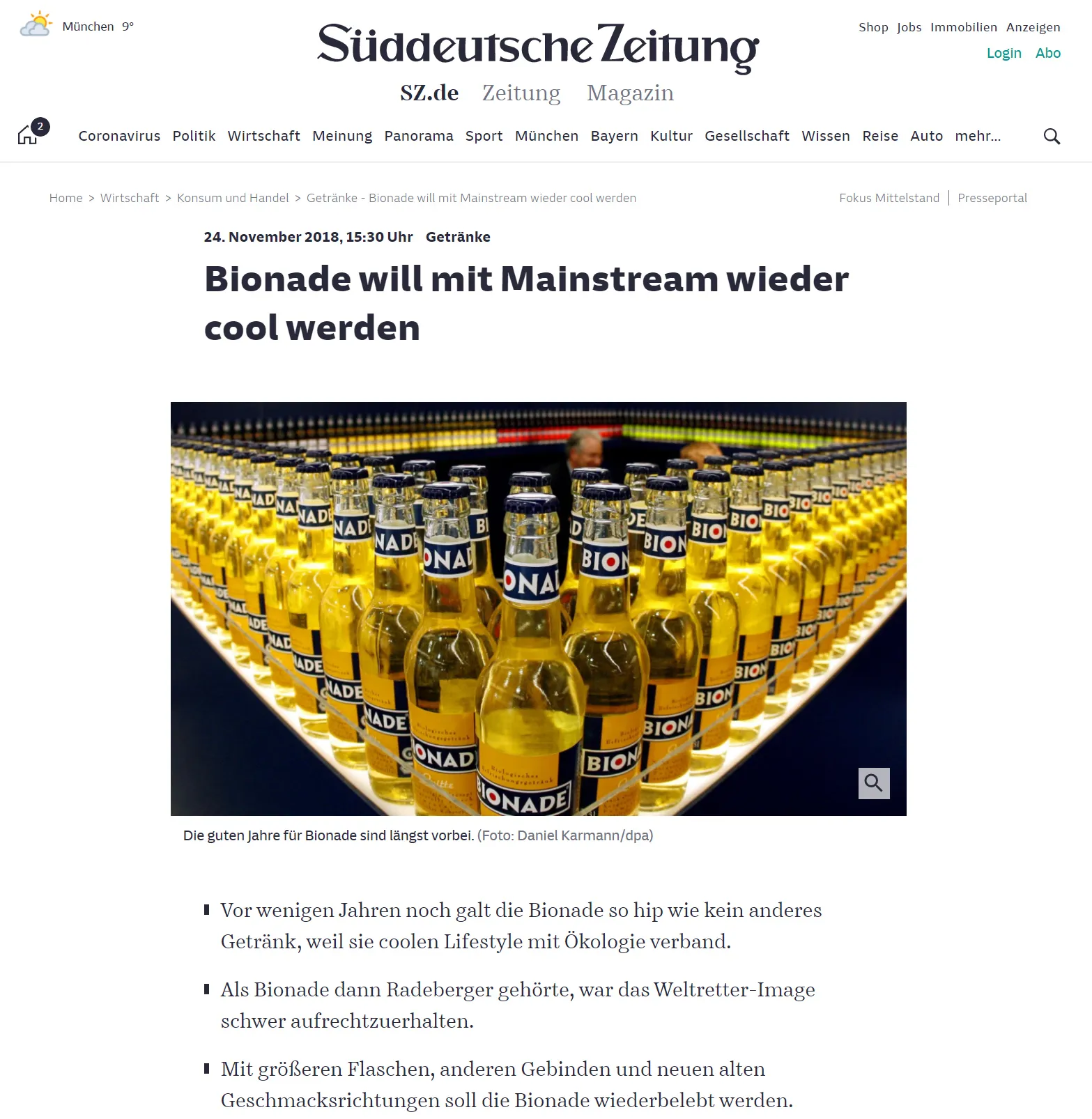
4 | Define the scope of services: a core service or a vendor's tray
Serving a niche is often more successful than trying to cater to mass tastes. This means that you have to decide whether you want to position yourself broadly or prefer to score points with a small offering that no one else has. Experience shows that you are usually more successful in the market niche.
Successful positioning often follows a niche strategy ... on a product, a target group, a special service, etc. As an agency, we have developed a target group of SMEs and adopted a full-service approach for a long time. For example, we presented our full-service belly store for customers on the competencies subpage:
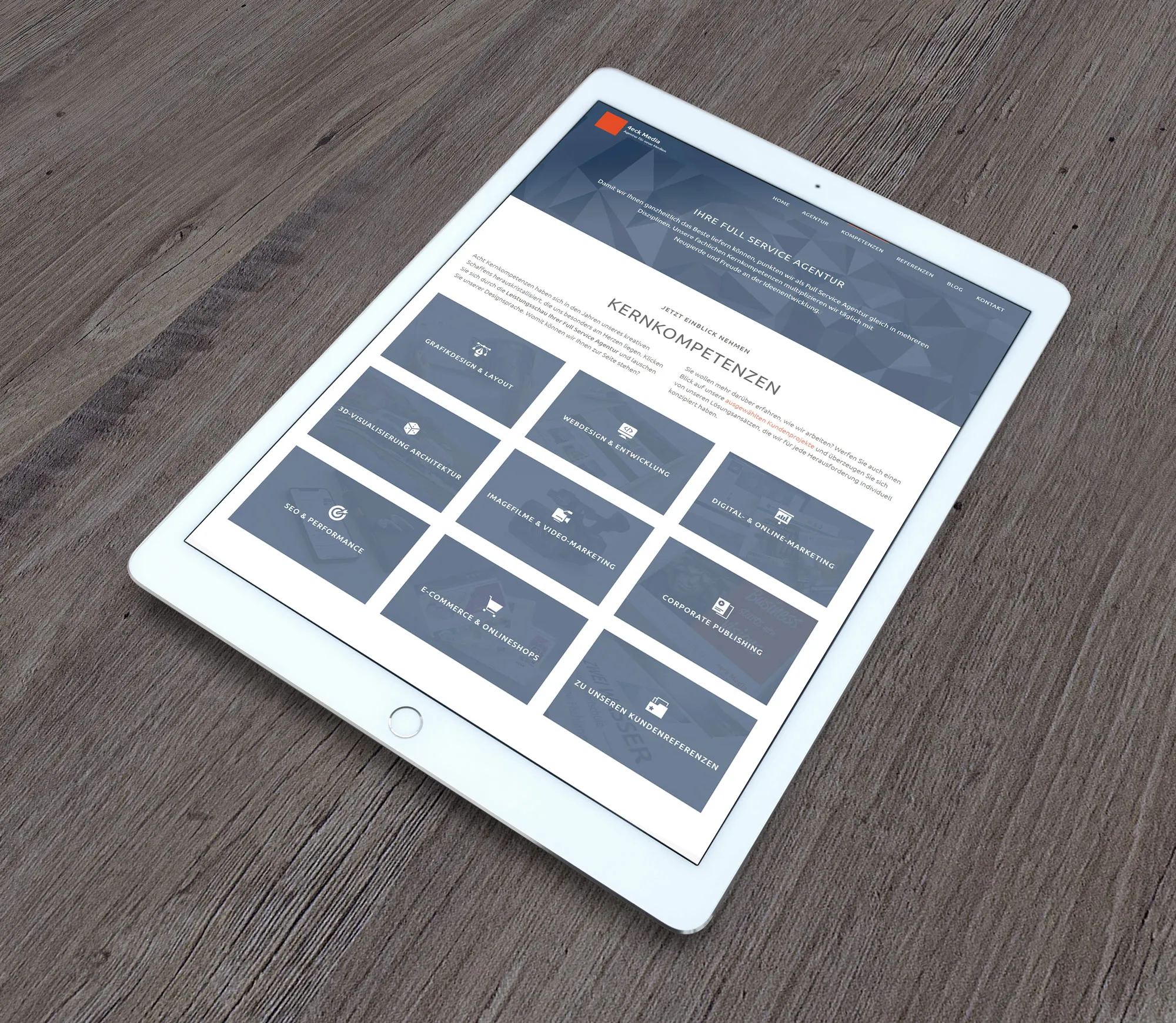
Then we asked ourselves whether we should rethink our positioning in our agency. Away from the full-service approach for customers towards, for example:
- E-commerce: We see advantages here in low regional competition, comparatively high budgets, long-term collaborations and customer loyalty even beyond store development, among other things
- Design with a focus on UI/UX/print and 3D visualization: We see advantages here in the subject matter, as we are designers at heart, the lower project management requirements, etc.
Both approaches also have disadvantages for us. That's why, with the relaunch, we reduced our nine services to four in order to make our core services clearer. We are doing well with this, especially here in our local presence. In order to be even more sharply positioned, we are also thinking about publishing a second agency page that only deals with PageSpeed optimization & SEO , because we see this as one of the strengths in which we feel we are better than most of the agencies we know - and then to compete nationwide and internationally with this page, because PageSpeed optimization with database optimization, JavaScript reduction etc. is a very special requirement that we have mastered.
5 | Check the scalability of the offer
Imagine your offer becomes a bestseller. How can you increase it without driving up the costs? Let's assume you run a restaurant. If you have a queue of customers, you will increase the number of seats and hire more staff. This means you generate more income, but also have higher expenses for expansion and team reinforcement - combined with the risk that demand will fall again one day.
The scalability of a business model also has an impact on your own positioning strategy. While - as in the restaurant example - scalability in the agency sector almost always goes hand in hand with a parallel build-up of human resources in order to handle the volume of new projects, a purely digital business model, such as SAAS providers, is easier to scale.
For our subscription commerce platform TutKit.com, we work with usage and access licenses. If we have 1,000 more customers, the personnel costs still remain lean.
The second question then arises in this context: how suitable is the business model for mass production? Where are the limits of scalability? In the first few years, our focus was clearly on creatives, image editors, designers and photographers. This meant we were narrowly focused and limited our scalability in terms of target groups. Our new positioning is aimed at digital skills for B2B, which has made our business model more scalable and suitable for the masses.
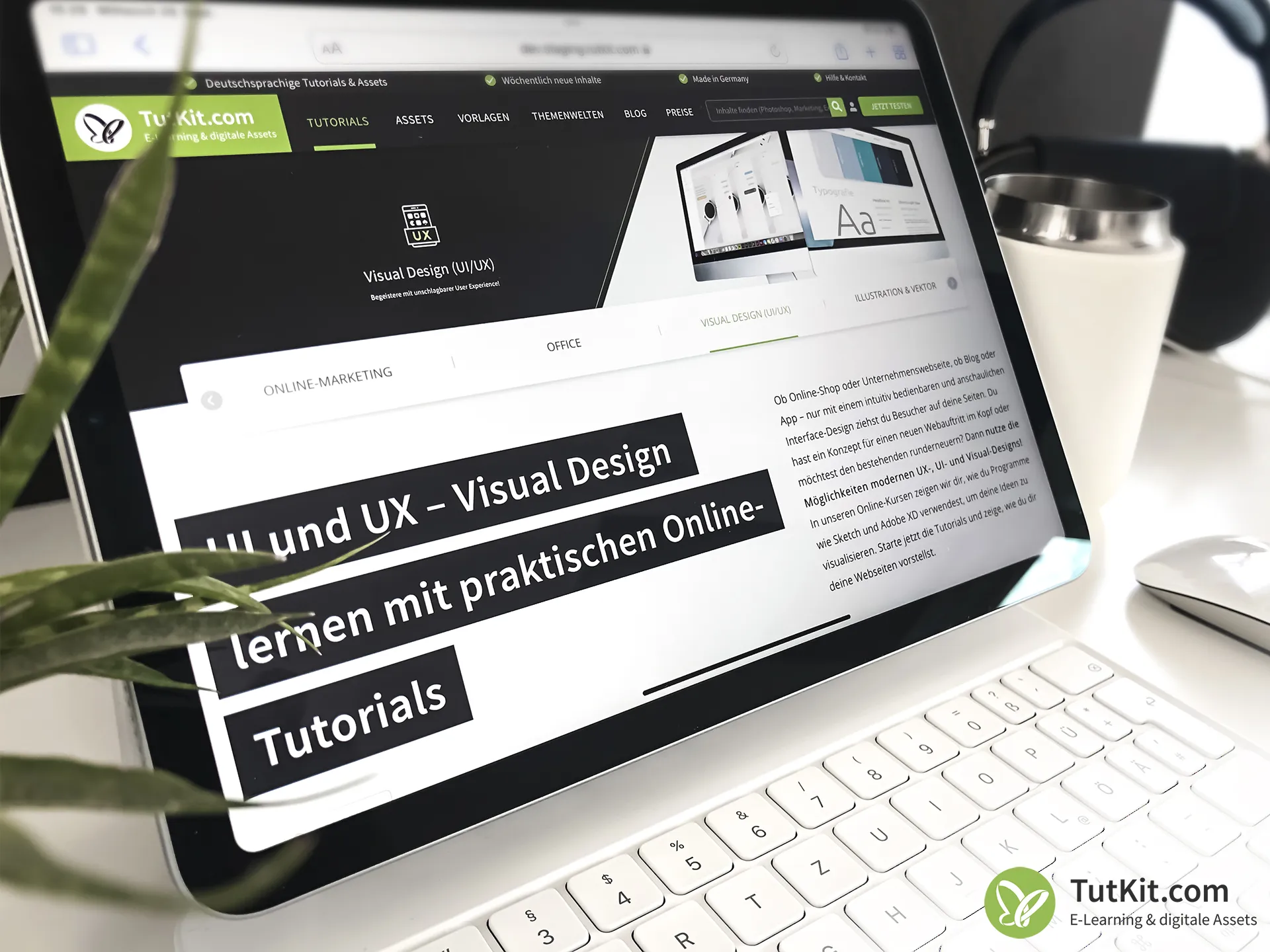
6 | Offering additional services
It's often the little things that make the difference. Customers like additional service. For example, one of our employees who lives in Augsburg always orders from the pizza service that has a built-in oven in its cars so that the pizza is delivered really hot. Everyone likes their car to be returned clean after it has been repaired at the garage - even if we know that the cost of the repair is almost certainly included in the price.
In the digital sector, there is an additional service when companies offer to provide support via remote maintenance. The office technology company Mandt in Neubrandenburg, for example, has placed Teamviewer support very prominently on its website under Service to make it easy for customers to take advantage of remote maintenance as an additional service.
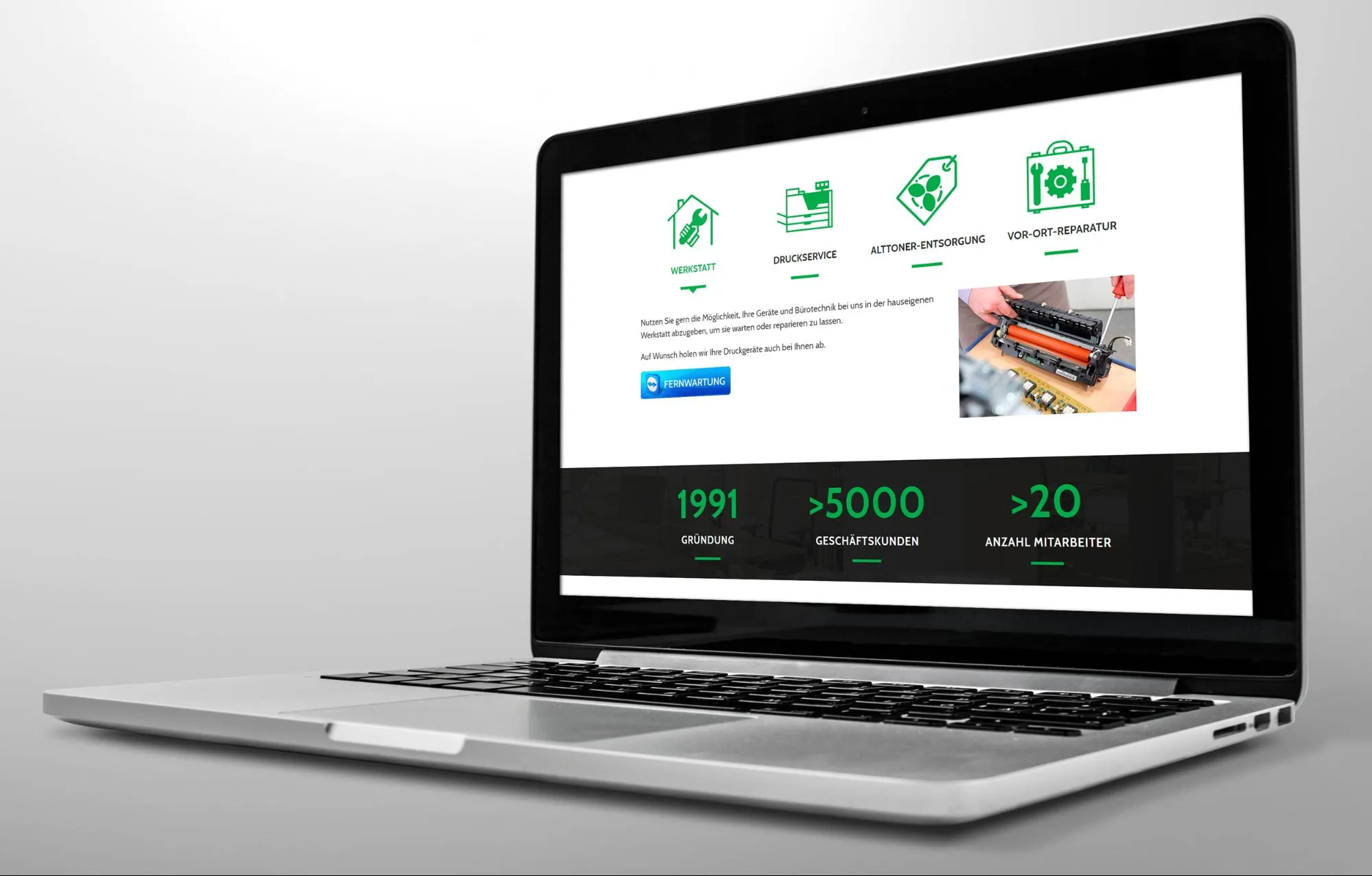
Business customers of agencies also find it rather annoying if they also have to take care of web hosting because it is usually a foreign matter for them. If the agency does not offer web hosting as such directly, it can still handle the booking and technical and content-related (keyword: AV contract) setup of the customer account with the web host for the customer.
Think about what your additional service could look like for your customers that would position you better than your competitors.
7 | Offer something personal: customizable vs. mass product
If the cream cake has your name on it or you have a smartphone with a signature, that's kind of nice, isn't it? Think about whether you can offer your products in a personalized form.
For example, www.ihr-champagner.de offers customizable champagne bottles, for which we individually designed the label for an agency assignment as part of real estate marketing for a client, which were then handed over to the new owners when the apartment was handed over. It went down really well.
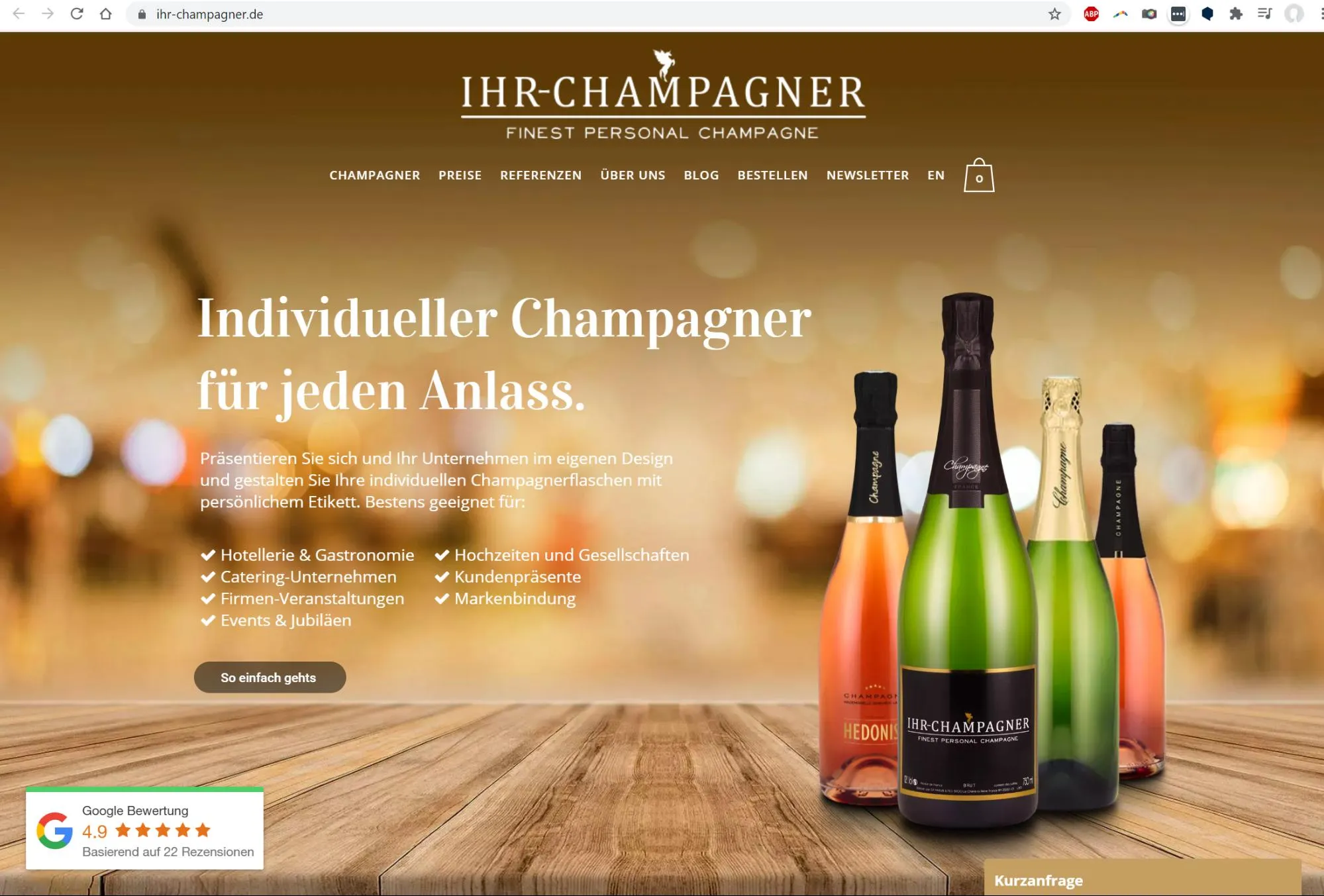
The question of whether the services or products offered are standardized or customizable can also be part of your positioning.
8 | Focus on standardization
The degree of standardization of processes or products can also play a role in your positioning. Even industries that typically seem relatively individualized, such as agencies, coaches and consulting companies, often work and think more in terms of products than individual projects.
The degree of standardization of processes and products has an influence on the scaling of the business model. The more standardized the business model, the lower the procedural effort and internal costs and the lower the risks in customer orders.
Imagine you are a fashion designer. Now you can create unique pieces for each individual customer. Or you can design a collection for many. In other words, you standardize your work. The following applies: the more standardized your processes, the lower your effort, the lower your internal costs and the lower your risk.
Of course, even with a high level of standardization, your customers shouldn't feel like they're buying something off the shelf.
At our agency, we often develop highly customized and functionally sophisticated websites for our clients. Nevertheless, we strive to adopt the technical solutions once created in subsequent projects wherever possible or even incorporate them directly as an automated process, so that a standard setup is already in place at the start of the implementation of a design for a website, which already includes a wide range of functions such as navigation, backup features, GDPR compliance, multilingualism (including standard texts), etc. The more standardized our internal solutions can be tailored to new customer projects, the less time we need for development and the higher our profitability.
In the case of a very individual project, which only follows general web standards as a solution, but cannot increasingly fall back on internal features from previous projects that have been prepared as standards, more or less everything has to be programmed individually. There are hardly any shortcuts, but there are many unknown aspects and risks. For example, the reprogramming of our e-learning portal TutKit.com took more than 10 months from a calculated development time of 9 months - including almost two years of refactoring existing code in live mode. Since the programming was agreed as a lump sum, such an individual effort can already mean a substantial risk for smaller agencies - and also for the client, who expects the product and brings it to market far too late.
9 | Responsiveness and contact options
Questions are part of life. Especially for your customers. If the worst comes to the worst, they want to have a contact person. They don't want to spend a lot of time looking for it, nor do they want to pay for it. They want to speak to a person instead of a machine. And as quickly as possible. How do you want to be there for your customers when they have questions, suggestions or problems?
The unavailability and inaccessibility of actual support staff on Facebook and Instagram, for example, is negative.
Amazon, on the other hand, stands out positively when a support number is dialed there. At Amazon, the customer is not only king, but is treated almost like a god. This is no coincidence, but one of the company's top priorities: to be the most customer-friendly company in the world. For many customers, it is.
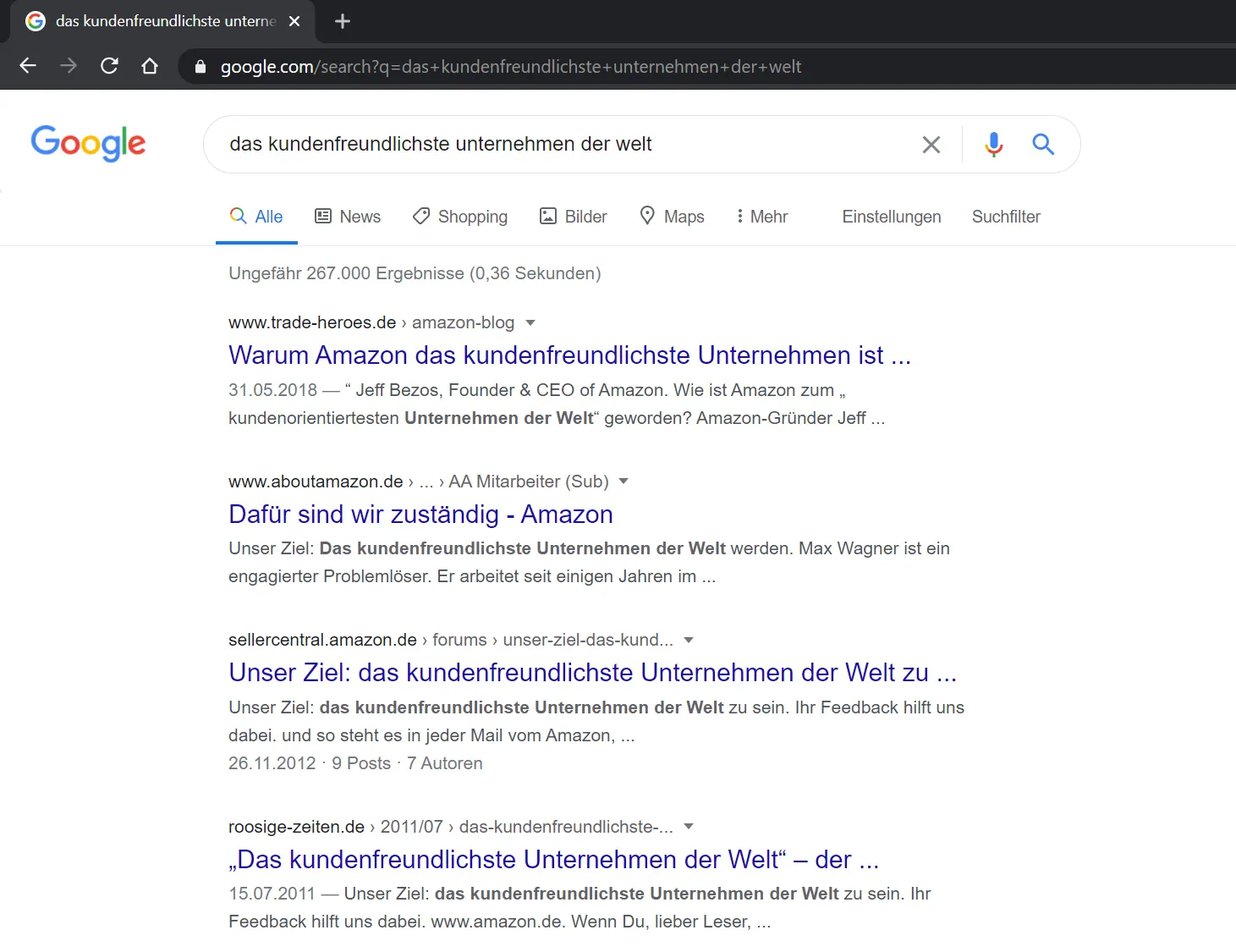
10 | Include support & assistance in the portfolio
How can you make life easier for customers when dealing with your services? Support and assistance are important elements of positioning.
With the templates and design templates from TutKit.com, we compete with international providers such as Adobe Stocker or Envato Elements. Our advantage: We offer a help video in German for almost all products. This increases satisfaction with the product and at the same time reduces the number of support requests.
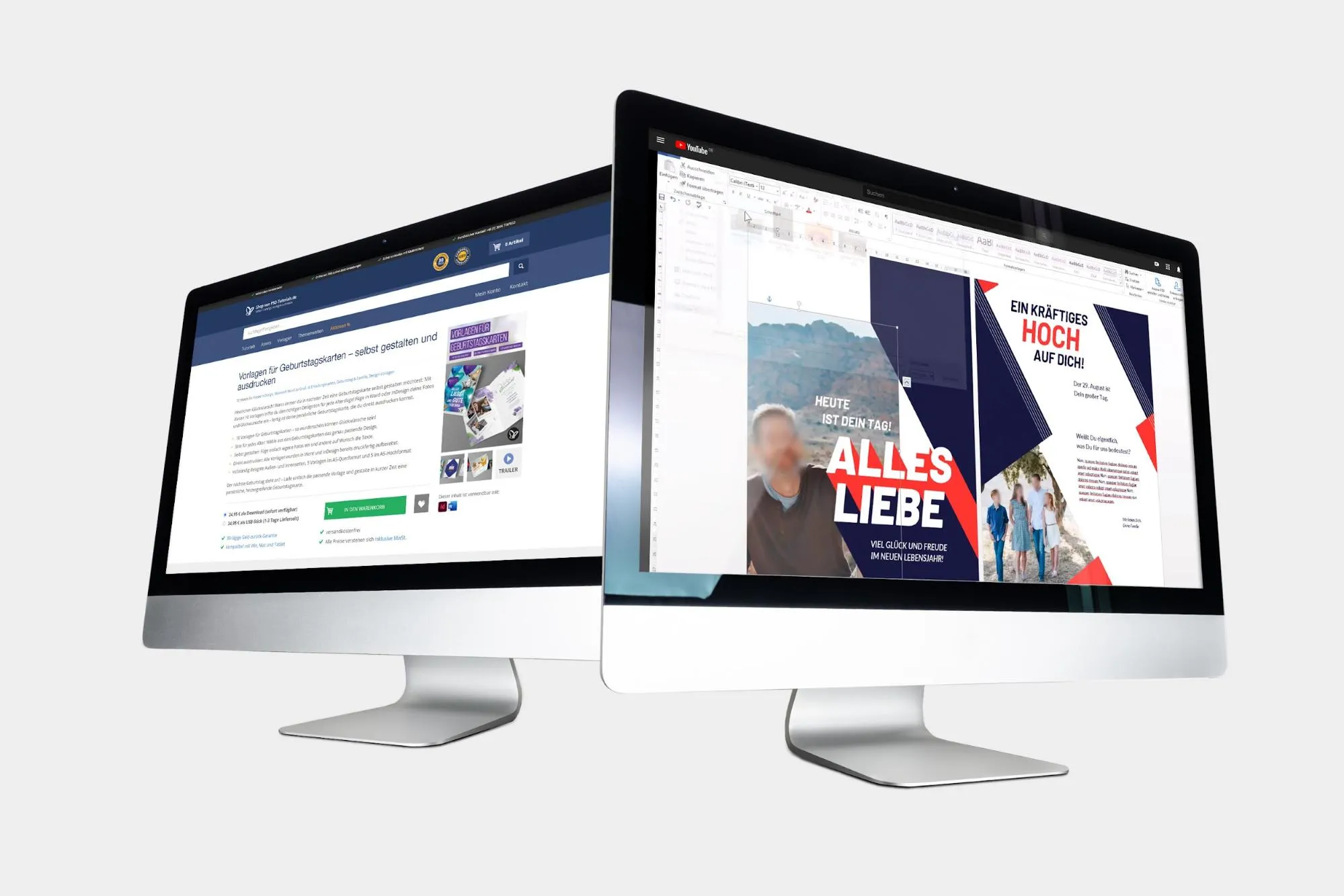
11 | Harnessing the power of technology
If you think back to the nineties, life today somehow feels like science fiction. You order something online and are always aware of where your parcel is and when the letter carrier will ring the doorbell. This is made possible by a high level of technologization. What opportunities could you offer in this area?
We have been producing our own video training courses as TutKit.com since 2005. First there was one, then two, then three educational DVDs. In 2008, we developed our first online store. We built the training menus by hand using Adobe Dreamweaver. That was time-consuming and sometimes error-prone. In 2012, we developed a menu generator. Now we could create entire training menus with a single click. This advance in technology enabled us to increase our output from around 15 new publications per year to a good 100.
With the penetration of AI tools in 2023, more and more text and image creation work will be done directly with a few clicks by entering prompts, with a result that will finally take over the last bastion of humanity, creativity, also by machine. What possibilities of technologization can you use for your company and for the benefit of your customers? Just don't resist, because your competitors are certainly already using the latest AI tools.
12 | Green light for the user experience
Conveying security, conveying emotions, satisfying the needs of the target group ... User experience is a fundamental building block for your success - especially in the digital sector.
Take online print shop viaprinto.de, for example - a live view function shows a preview of the print result immediately after uploading. For multi-page documents in particular, this gives the user the certainty that the print result will look exactly as it was designed. This function is currently only offered by very few print shops. This is a customer-centric way of retaining the target group through a high level of user experience.
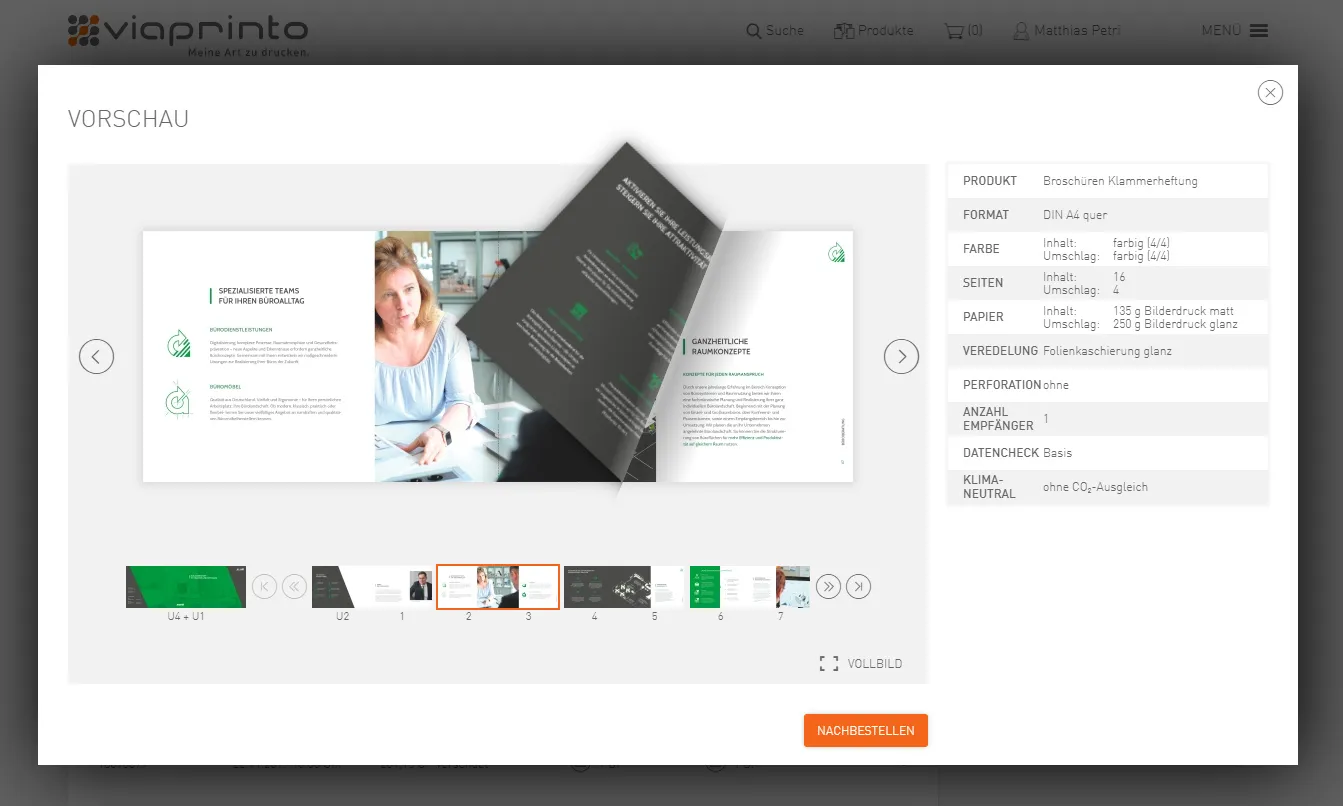
13 | Packing the ingredients for the shopping experience
Deliver the package, take out the goods, done. That's the standard way. Want to send emotions? Great idea. How about a handwritten postcard that combines your offer with a thank you? This creates sympathy, creates identification and perhaps also ensures that the revocation does not occur.
Take fischkaufhaus.de, for example - the parcel label advises customers to contact the company directly if they have a problem, rather than expressing their anger in a bad review. As chilled fish is shipped here, the product may arrive spoiled if the delivery is delayed. The postcard absorbs the potential frustration and strengthens trust.
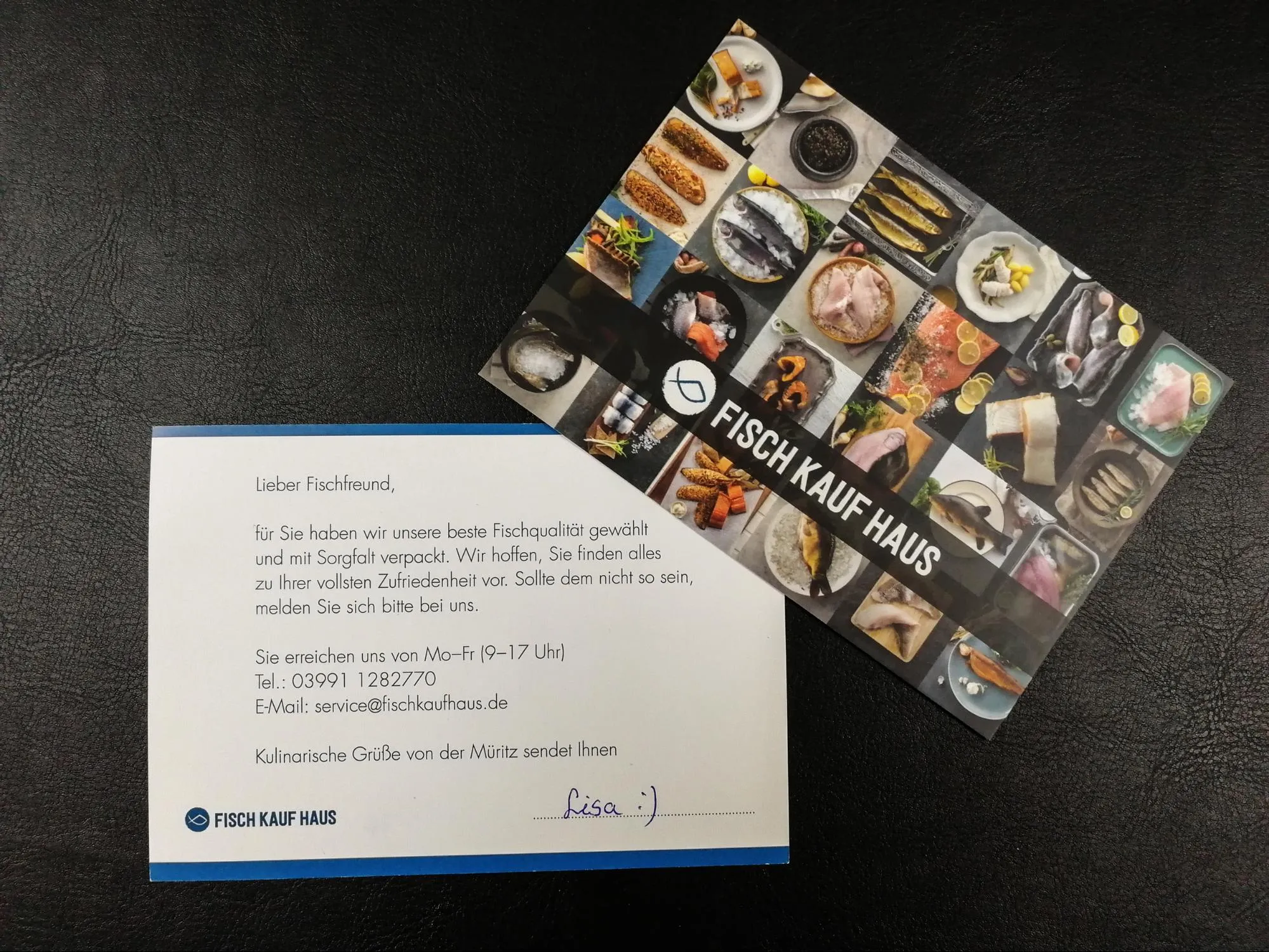
14 | Price perception high or low
Price is a decisive factor in your positioning - for your customers and for you. A higher price can increase the status of your offer - or bring you to your knees in the price war with your competitors.
Status costs. We immediately think of car brands. Some are an expression of a certain philosophy - which we help to pay for. Others get us from A to B - and are more affordable. We are familiar with the further distinction between luxury items such as expensive watches and the Euro goods of other suppliers. Some reflect a status, others "only" show the time.
Luxury items such as premium watches or car brands are often used as promising elements in trailers because customers are promised this status or the company uses the co-branding as an exclusive framework for itself.
There are many examples of this in the consulting and coaching scene, such as here or here.
Positioning through price can be status-supporting with a high price and ruinous in the price war with other low-cost providers. Please note: Positioning via the lowest price is dangerous. Discount battles attract a disloyal customer group that is very willing to switch. And in the end, someone will still manage to be cheaper than you.
15 | More choice in payment options
Customers should find their preferred payment option. Here in particular, it is possible to use the co-branding of established companies such as Amazon Pay for online stores. Who wants to enter their credit card details into a service or online store that they are not entirely familiar with? Amazon's customer-friendly positioning is used here because Amazon is trusted by its customers.
On the other hand, modern payment methods such as Google Pay or Apple Pay can underline the provider's modern attitude. Those who offer their customers purchase on account position themselves as more customer-friendly in terms of payment options than competitors who do not.
16 | Promise good quality
Quality is of course a decisive argument. By promising your customers quality, you can further sharpen your positioning. It goes without saying that you also have to prove this promise.
Take Miele, for example - for generations we have known: "Miele lasts a lifetime." This promise of quality not only jumps out at us in the slogan, but everywhere on the Miele website.
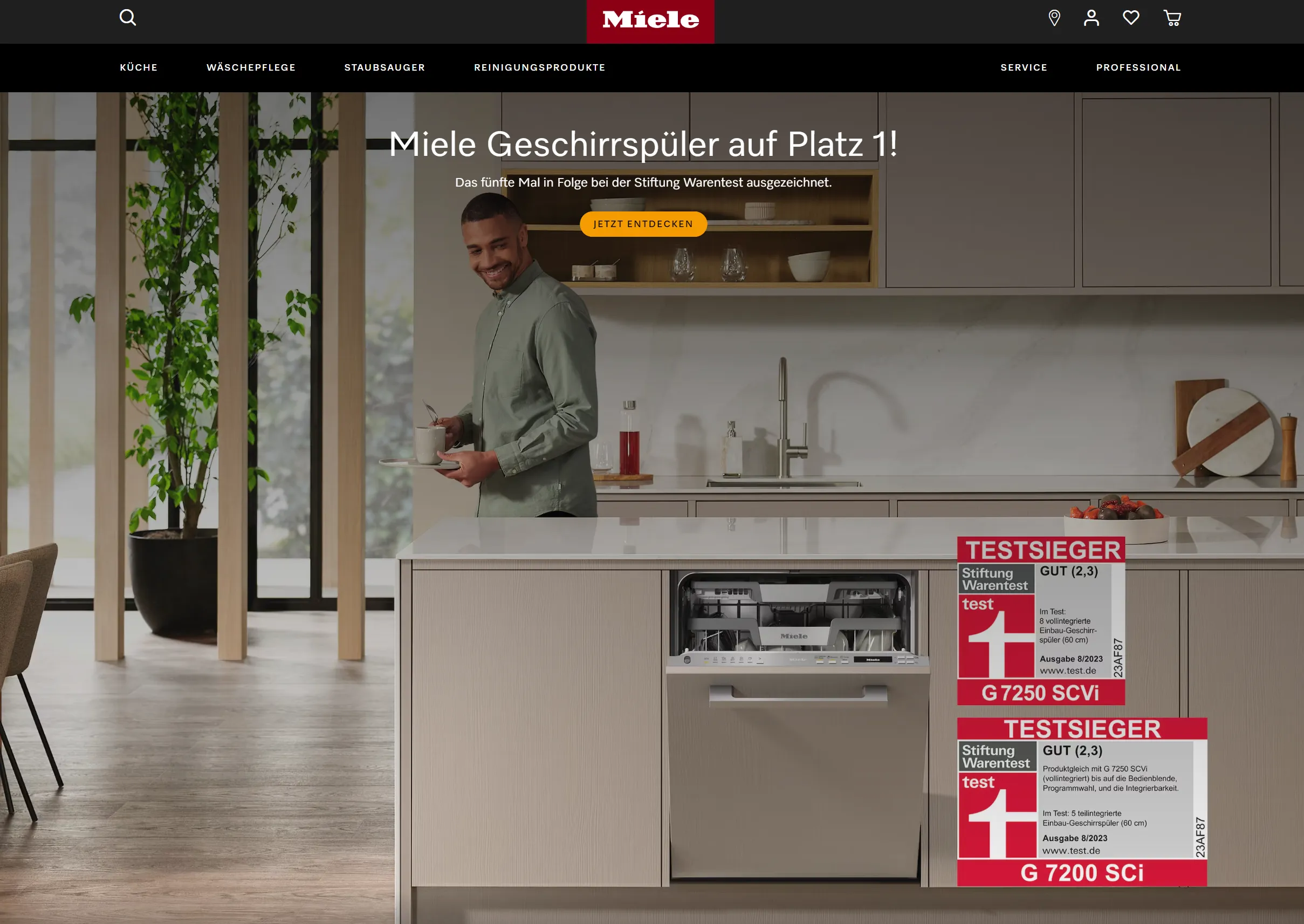
17 | Social proof: making trust visible
If your friends tell you that the new restaurant around the corner is first class, you will probably soon be there yourself. In our actions, we like to follow the decisions of other people. This makes life a little easier.
Social proof is the principle that we like to follow the decisions and actions of others in our actions. Testimonials, seals of approval, certifications, references, press reports and customer testimonials can be used to convey trust in your company and make the social proof of your offer transparent.
The popular counters on websites are also used for social proof with information about
- the number of customers: many customers suggest a popular offer
- the number of employees: many employees stand for size, competence and attraction
- the year of establishment: the earlier the company was founded, the more experienced it is
Here on TutKit.com, we use reference customer logos as well as customer testimonials and case studies in interview form to increase our social proof. We also use the integration of Google reviews and show who has already reported on us in the press section:
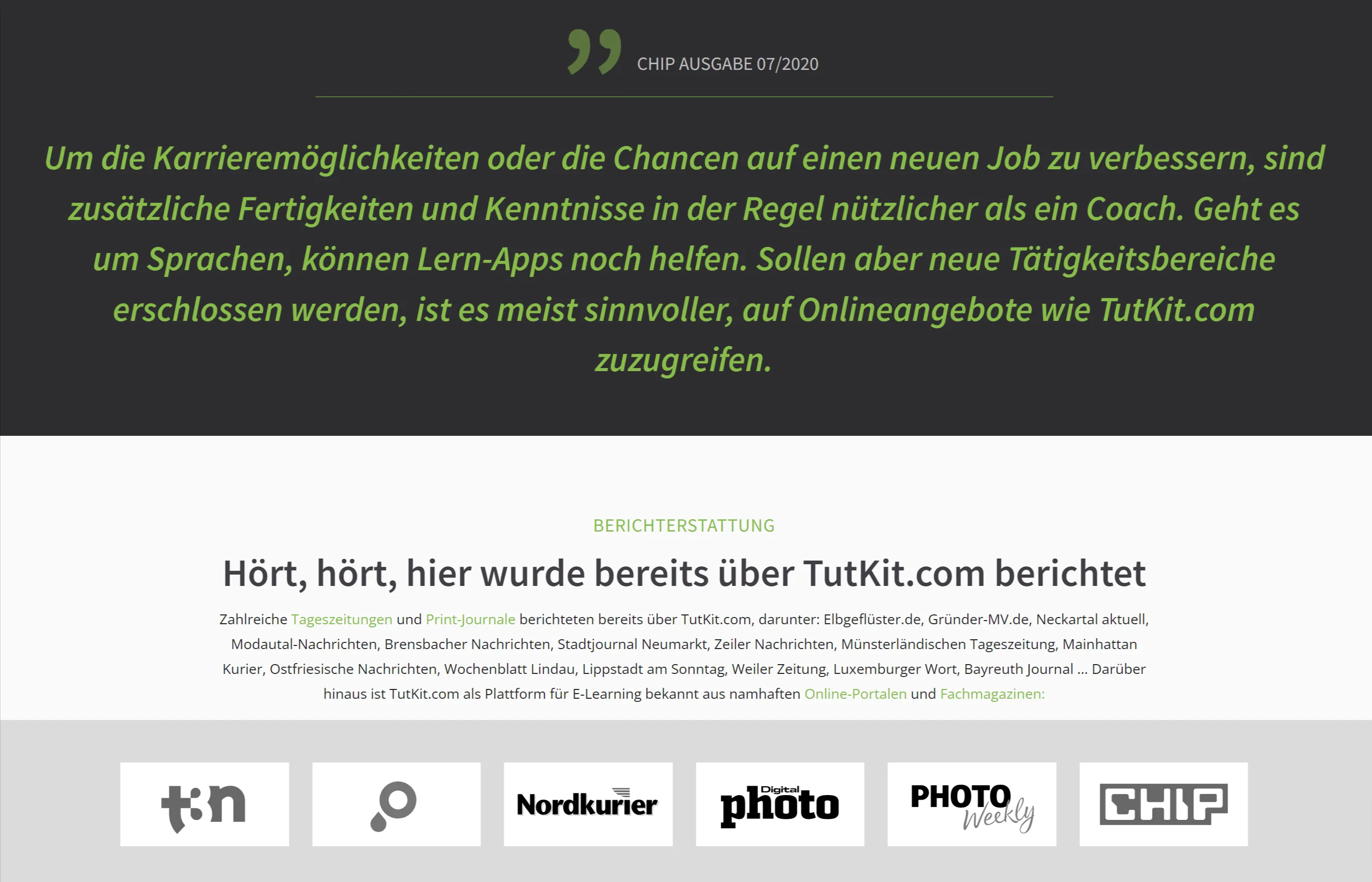
But social proof elements are not only used in websites or brochures. In the written offer to the customer for our calculated service on the penultimate page, we also close the document with a page solely to emphasize our trustworthiness, including the customer's voice. After all, it is precisely at this moment that the customer decides whether or not to accept the offer. At the point where the purchase is concluded, customers often need additional elements to underline their trustworthiness, such as the number of customers, reviews, etc.
Tip: A customer vote or a review usually does not come by itself. (Except for the negative ones.) Ask and, if necessary, prepare something for your customer. Make it as easy as possible for them to rate you or leave a customer testimonial for you on Google, for example.
18 | Convey security with guarantees
You can promise more than just quality. Give your customers guarantees along the way. This makes their decision easier and gives them additional security.
There are a whole range of guarantee options. For example:
- 30-day satisfaction guarantee
- Money-back guarantee without giving reasons
- Punctuality guarantee for delivery by a certain date
- Service guarantee that repairs will be free for XY period after purchase, etc.
Please note: From a legal point of view, it is forbidden to advertise self-evident facts such as the 14-day right of withdrawal for consumers. You could receive a warning. If you want to know which guarantee statements you are allowed to advertise with, take a look at IT-Recht-Kanzlei.
19 | Stir up fear of pain or negative consequences - and take it away skillfully
Sell more through fear? It works. Just think of all the shampoos you can supposedly use to counteract hair loss. Whether you can or want to use such opportunities for your positioning depends on your portfolio, of course.
By dramatizing the danger or an ominous situation, fear is suggested, which is prevented by the product or service. This is the classic way insurance companies work.
When I borrowed a removal van from AVIS, the AVIS employee tried to persuade me to waive the excess of 1000 euros in the event of damage. This waiver cost in the lower double-digit range. I refused at first. But the AVIS employee drew up 2-3 scenes such as a parking accident involving someone else or something similar. I didn't even have to be at fault and so on. All right, I confirmed this option. And sure enough, I had a stone chip on the highway and I could almost watch how it turned into a crack. In the end, I was very grateful that I had booked the waiver.
Customers unconsciously look for purchase confirmation or safety arguments for a decision! With our customer inquiries in the agency sector, it is crystal clear to us that a freelancer can often offer a supposedly identical service, e.g. a new website, more cheaply than we, the 15 people in the team. If we get the impression that the prospective client might drop out or expresses a desire to compare prices, we send them our checklist. We write down many starting points that give the prospective client security when making a decision for us and create some uncertainty if a prospective client is thinking about hiring a freelancer because of the price - and not so much the quality as a decision-making criterion.
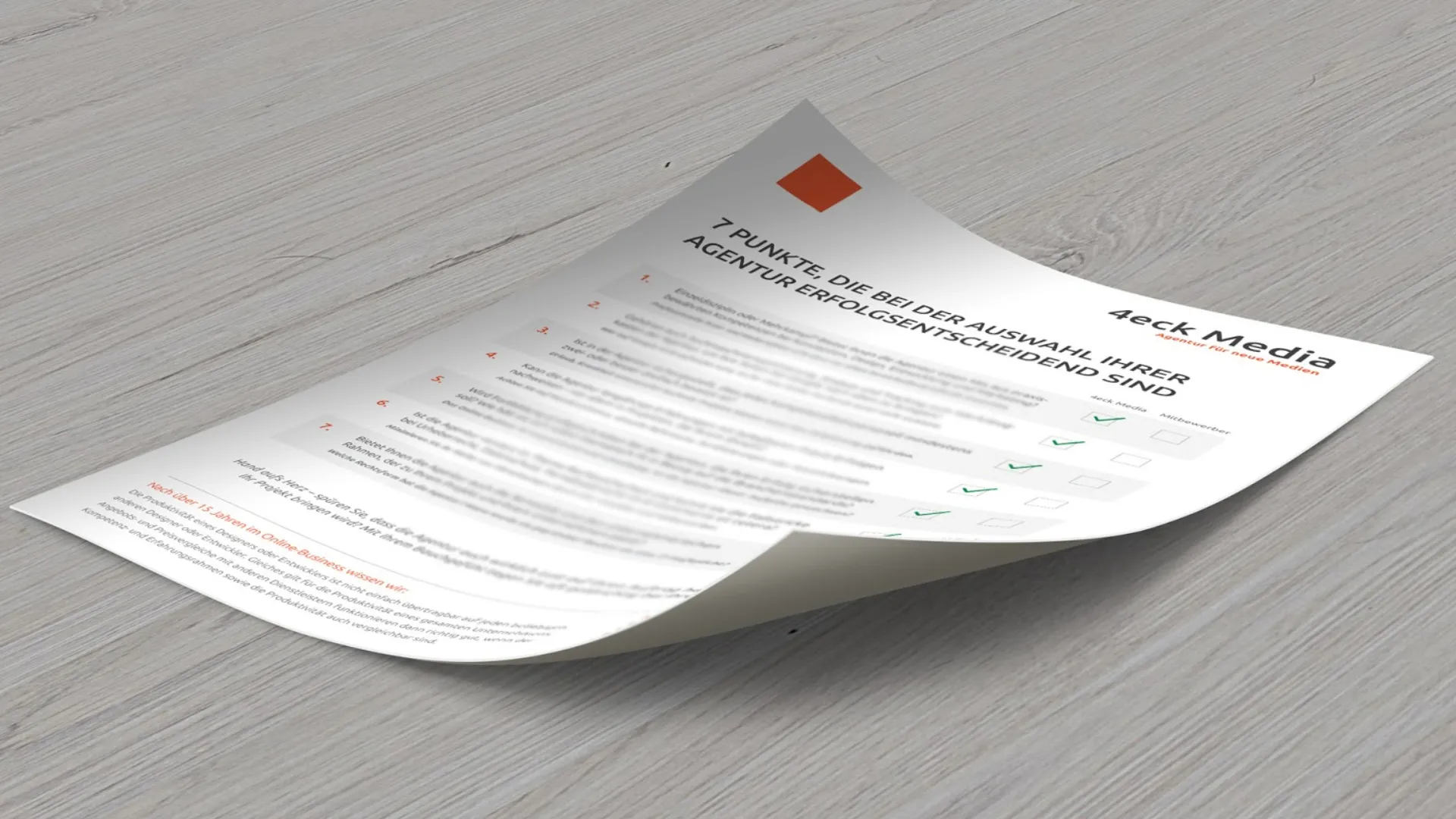
More about brand positioning
Want to know more about brand positioning? Then click through to our video training "Positioning companies & brand building". In the 4th and final part of our blog series, we also shed light on the most elementary aspect of any positioning: the idea.
- Brand positioning - Part 1: What is it and which five questions are crucial
- Brand positioning - Part 2: Captivating your target group with the right strategy
- Brand positioning - Part 3: 19 tips for brand building and target group acquisition
- Brand positioning - Part 4: Ideas, roadmap and necessary changes of direction

